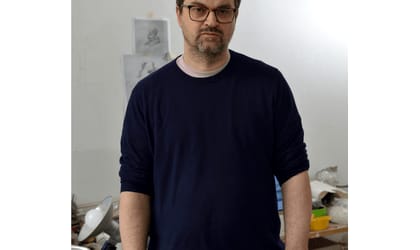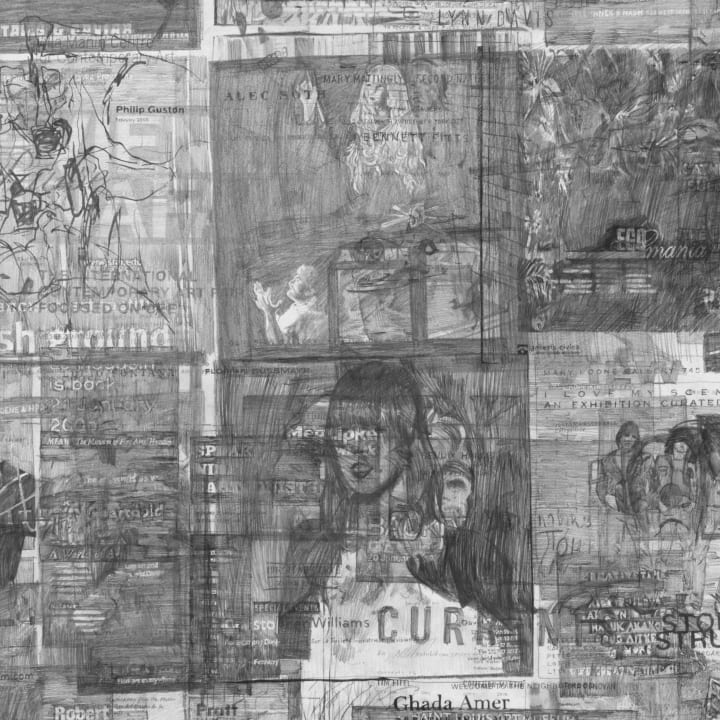Until November 24, 2024, Romania will showcase an exhibition into the intricate dynamics between work and leisure at the prestigious Venice Art Biennale, featuring the works of Serban Savu. Curated by Ciprian Muresan and spanning across the national Pavilion at Giardini della Biennale and the New Gallery of the Romanian Institute of Culture and Humanistic Research in Venice, this exhibition promises to offer a profound exploration of the complex relationship between labour, leisure, and societal norms. Business Review had the opportunity to engage with the Romanian team entrusted with representing the country for La Biennale.
Could you elaborate on how the intimate dynamics of your friendship with Șerban Savu have influenced the creative process behind projects like the one showcased at the Venice Biennale?
Șerban and I have shared a studio for a long time, and we have exhibited together many times: as a duo in Hong Kong or Miami, and in 2019 Frederic Paul, curator at the Centre Pompidou, invited us to Atelier Brâncuși, in an exhibition that started from the theme of the studio itself, L’atelier sans fin. However, we have always presented individual works, not collaborative ones. These exhibitions were conceived as a dialogue between us, and here we found the starting point for the project in Venice. But we have collaborated in different forms, for example, I wrote a text in 2009 for his solo exhibition at Galeria Plan B in Berlin, and recently Șerban wrote a text in a book of mine as an artist.
In what ways do you believe your collaborative relationship with Șerban Savu has contributed to the evolution of your individual artistic practices over time?
We are quite different as artists, especially in terms of medium: Șerban is dedicated to painting, while I switch from one medium to another, focusing the least on painting. He is very stable and consistent in what he does, whereas I am very experimental. Of course, we intersect thematically, especially with regard to socialist heritage, but the formal resolutions are totally different. By discussing a lot, we mutually influence each other, and in many of my drawings, I use art albums from his library.
How do you navigate the balance between maintaining your distinct artistic voices while collaborating closely with Șerban Savu on projects such as the Venice Biennale exhibition?
Being so different in personality, it is not difficult at all; we complement each other well. My interest in curatorial practice has been long-lasting. I integrate the exhibition into my artistic approach, such as the group exhibition of artists who committed suicide, for example, one of my works, or the exhibition with sculptures selected by weight – another curatorial act assumed as an artistic act. Of course, here too, in Șerban’s case, it is an assumed curatorial act, but I find it easy to navigate between artistic and curatorial practice, and that’s what I want to emphasize.
How do your experiences as an artist, particularly your representation of Romania at the Venice Biennale in 2009, inform your approach as a curator for the current exhibition?
Yes, the experience with Venice matters. I also participated in the main exhibition of the Biennale in 2017, curated by Christine Macel. Now, as a curator, I have other responsibilities, but an artist is always his own curator, and with Șerban, we thought together about this project. The dialogue was constant and involved a whole team: the IDEA Foundation, which publishes the IDEA art + society magazine, where I am an editor, invited Mihnea Mircan to be the editor of the catalog (he also has experience with Venice, being the curator of the Romanian Pavilion in 2007), we consulted with him constantly, we invited Atelier Brenda for the “interface” of the pavilion, the team is large, and each plays an important role.
How does the cultural and personal connection to Venice, particularly for Șerban Savu, influence the selection and presentation of artworks within the exhibition, considering the city’s significance as a source of inspiration and professional development?
Șerban lived in Venice for two years; he acknowledges that this was when he truly had his first contact with contemporary art, and this intertwining, both with the tradition of Venetian workshops, of glass, of mosaic, and with Renaissance and Baroque art, is reflected in the mode of presentation. The polyptych is again a form that we often find in Venetian churches.
What inspired the concept behind the project “Ce este munca” and its reflection on the complex iconography of labor and leisure?
The global situation today, but also the Romanian context, where for Șerban it is not only about socialism, about the communist period, we find mostly the transition in his practice, with labor migration and all the social phenomena that define Romania today.
Can you share any specific instances where the exchange of ideas and perspectives between you and Șerban Savu led to significant breakthroughs or shifts in the conceptualization of the exhibition?
Yes, being a sculptor, I imagined the exhibition around these models made by Șerban in recent years, but later I added the polyptych as the main motif, so now we have a beneficial tension between the polyptych and the objects in space.
How does Savu’s interpretation of labor and recreation manifest in the polyptych displayed at the Romanian Pavilion?
We tried to draw an imaginary line that connects different points in Șerban’s work done in almost 20 years, and this line is about work, a theme approached from a very sincere perspective, without pathos, without heroism or unnecessary drama. The characters in his paintings play hooky, they rest, but without making it an ode to laziness. It’s a different approach from what we find, for example, in Mladen Stilinović, for whom the refusal of work is an artistic act in itself, still in a socialist context.
What can visitors expect from the public debate program hosted in the New Gallery, covering topics ranging from the history of mosaic art to contemporary theories of labor, ecology, and post-work society?
These meetings at the ICR will aim to reveal and set a context in which Savu’s work can be more easily understood.
How do you envision the exhibition sparking conversations and reflections on labor, both within the art world and in broader societal contexts, particularly considering the diverse range of themes and mediums explored by the participating artists and contributors?
In addition to the vast, dynamic theme of labor, discussed for centuries, the exhibition we conceived includes vast material, 45 paintings, 4 models, plus a work-in-progress at the end of which we will have a monumental work. Through this, we chose to go against the current of visiting the entire Biennale, of a huge exhibition that must be seen in one or two days, as efficiently as possible. Through Savu’s painting and through our pavilion’s exhibition, we try to propose a meditative slowness, a pavilion where you are tempted to linger, to return.


